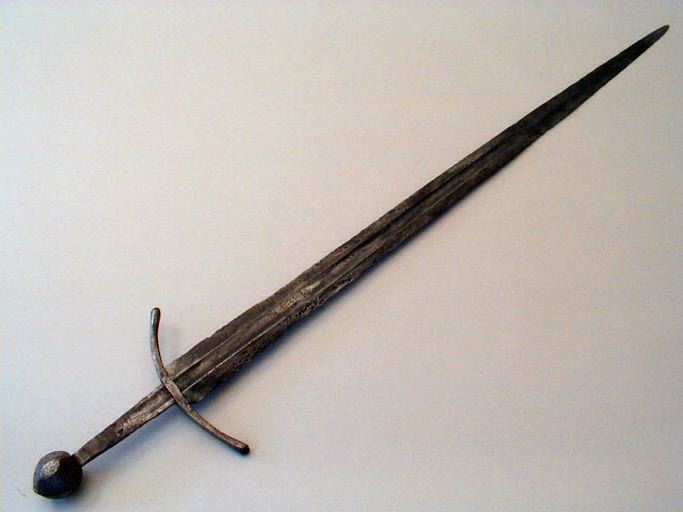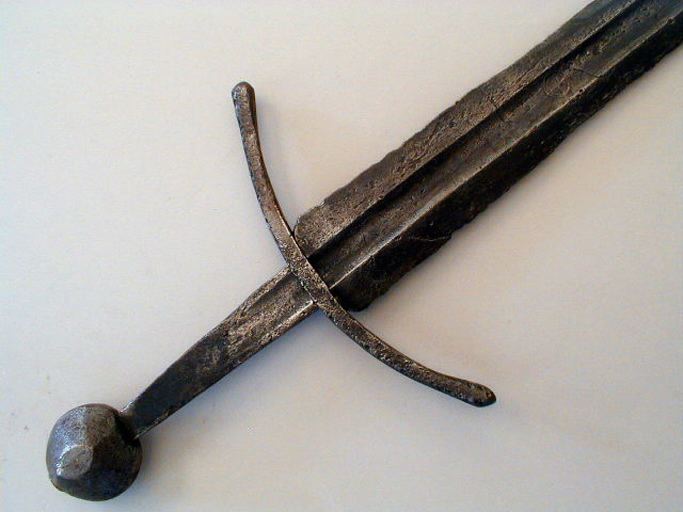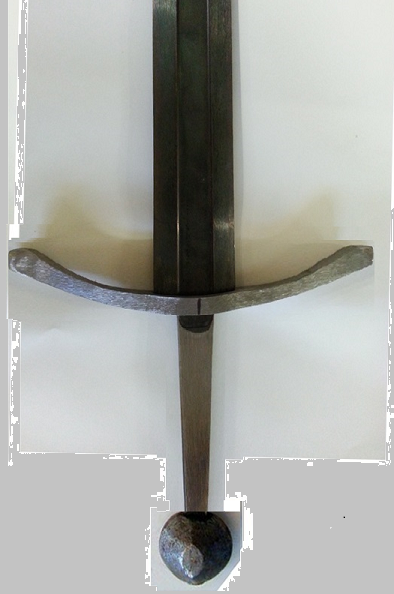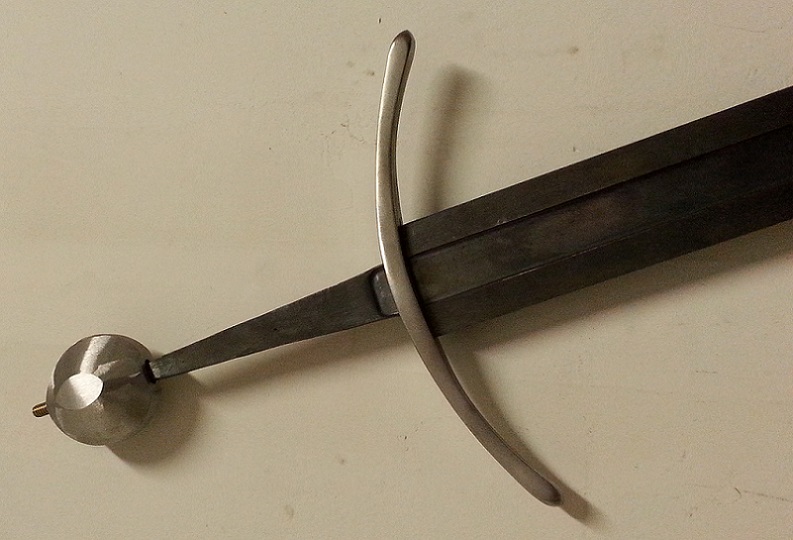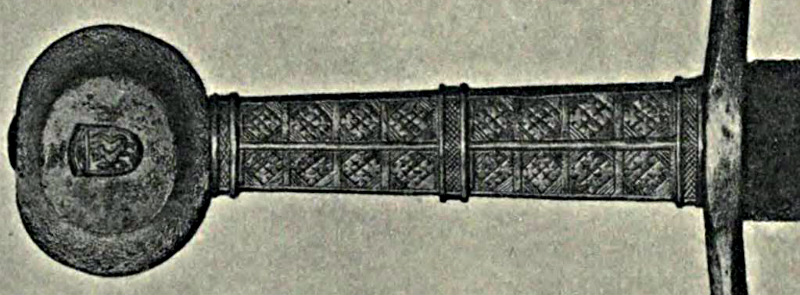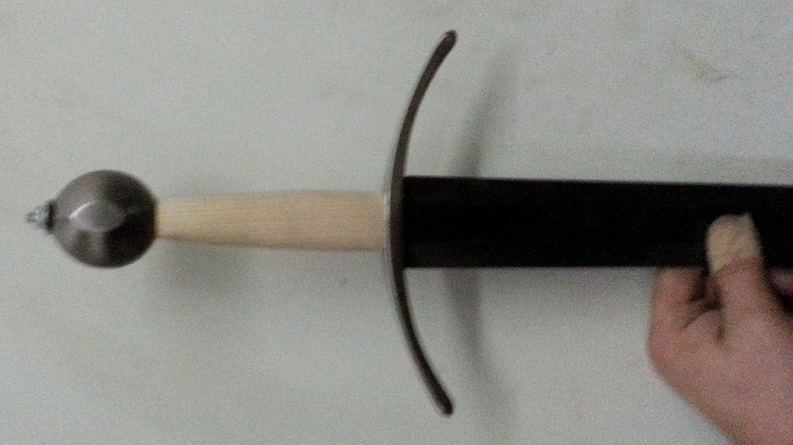I'm usually superstitious about sharing a custom sword project until I see some progress photos, but this time I feel like showing off my next commission a bit earlier than usual. Anyone who has followed my ramblings in the past few years might recall that my go-to place for such projects is A&A. When it comes to custom projects, you can't beat A&A for combining great quality & service with bang for the buck.
I try to stick with the classic crusader era in my current collection, but I've been looking for something to book-end this period: late 13th century - early 14th century, between the final fall of Acre to Muslim forces and the ignominious end of the Templars. At this time some swords were tending to get more 'pointy' than the X, XII, and XIII types that make up most of my collection, i.e., XVs and XVIs, culminating some years later in the XVIIs.
In the past year I have spent quite a bit of time researching XVs and XVIs. For example, that was the reason for this thread: http://www.myArmoury.com/talk/viewtopic.php?t=27918 I had thought to start with an XV, which would make for a nice contrast against my broad-bladed, fullered cutters, but its hard to find an historic example that a) clearly fits in the time period I'm interested in, and b) has the larger dimensions that I prefer. That led me back to XVIs.
In principle, XVIs should be as cool as any other type, but for some reason I find that many of the specific historic examples are singularly unattractive pieces. One exception is a group that share long, elegant blades, curved crosses, and pommels that range from type H to seed-shaped (with or without facets). They look like precursers to the XVII form, except with shorter grips and lacking the more robust blade. However, the group I am referring to is known in the literature mostly through works of art rather than historic examples, other than a rough sketch that Oakeshott made from an example that was then in a private collection. I believe he referred to these as being an Italian type based on the location of the art. I particularly liked one shown in an early 13th century 'Romance of Lancelot' manuscript, but it was sheathed so it was hard to be sure what type of blade it was supposed to have. And besides, detailed measurements are impossible from medieval art.
Then I remembered this sword from Musée de l'Hôtel Sandelin: http://moteur.musenor.com/application/moteur_...vre=394706
(See also photos below).
The little French I knew from school and working two years in Quebec has all but vanished, so here is the google translation:
"Sword
cold steel
14th Century (first half)
alloy steel
105 cm length, width 5.2 cm (blade) width 19 cm (guard)
Joined: Brand furbisher: Two triangles; Registration: double circle with a cross and surmounted by a cross mash (from both sides of the blade)
Archaeology, Weaponry
Sword thrusting, in good condition. Iron pommel two truncated pyramids welded base. Silk triangular flat gutter and brand furbisher one side. guard quillons short square with rounded ends and thickened very curved towards the blade. Blade high gutter on inclusion. Bibliography: Catalogue Daubresse, 1901, No. 041"
I first noticed this sword when having one of its museum sisters (a lovely big XII) replicated by Jeff Helmes. This one caught my eye because of the unusual W pommel (which I have always wanted) and elegantly curved cross which resembles that of some of the earlier 'transitional' swords like the Korsoygaden sword. I wasn't interested in the blade at that time, but things change. Its hard to be certain from the photos, but it looks to be an XVI blade of about 35" with 2/3 length fuller.
One interesting thing about this sword is that its pommel and cross are very close matches to two other swords:
The well known XIV in Leeds, found in Northern Italy: http://www.myArmoury.com/view.html?features/pic_spotxiv03.jpg
The XIV/XII at the Deutsches Klingenmuseum in Solingen, the basis of Albion's 'Solingen': http://www.myArmoury.com/review_alb_sol.html
These swords are dated to a similar period: late 13th - early 14th century, except the current one has a longer and slightly less broad (2" rather than 2.5") blade that appears to be more thrust-oriented. Its certainly tempting to suppose that all three of these swords might have all been made by the same hands. This might be worthy of some more research.
At any rate, I think this is a pretty cool sword and fits the bill for what I've been looking for. The project is underway with Craig & boys at A&A so hopefully I will be able to show some development photos later this year.
Any other thoughts and comments, as always, will be appreciated. I sometimes enjoy the learning experience with these projects more than ultimately owning the sword. That's why I'm a sword geek.
Regards, J.D.
